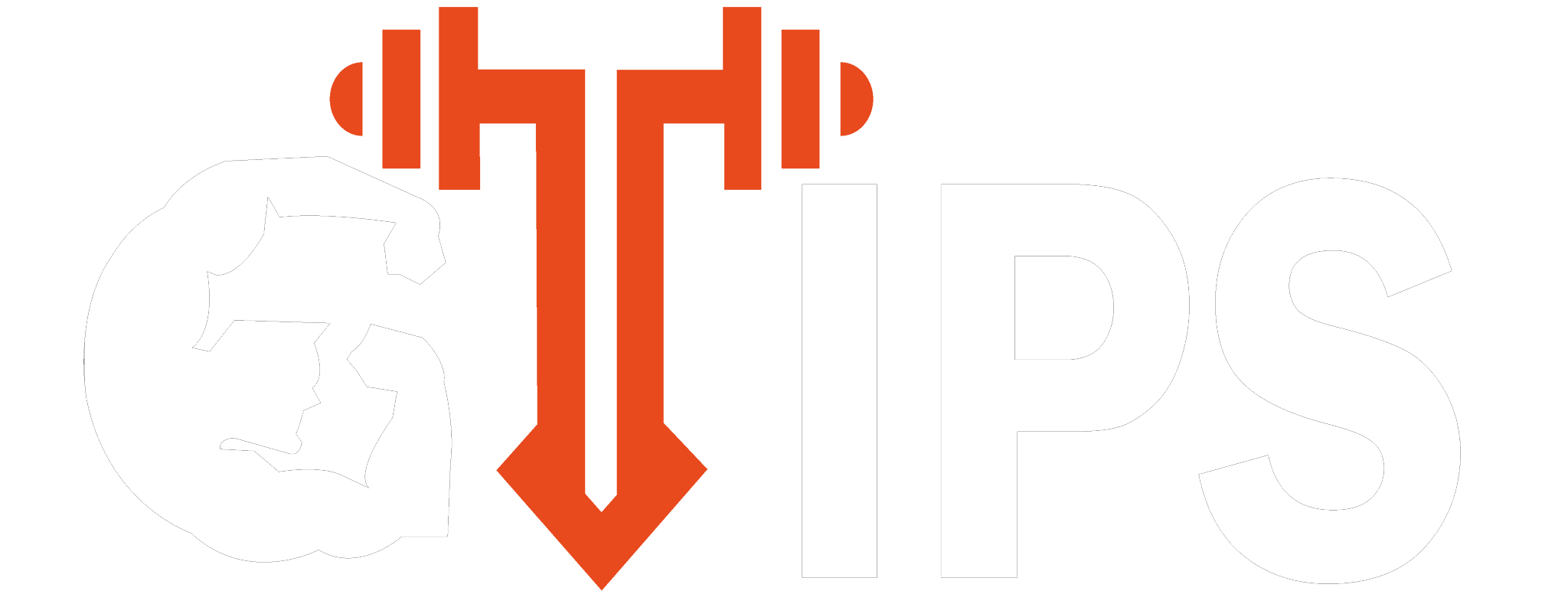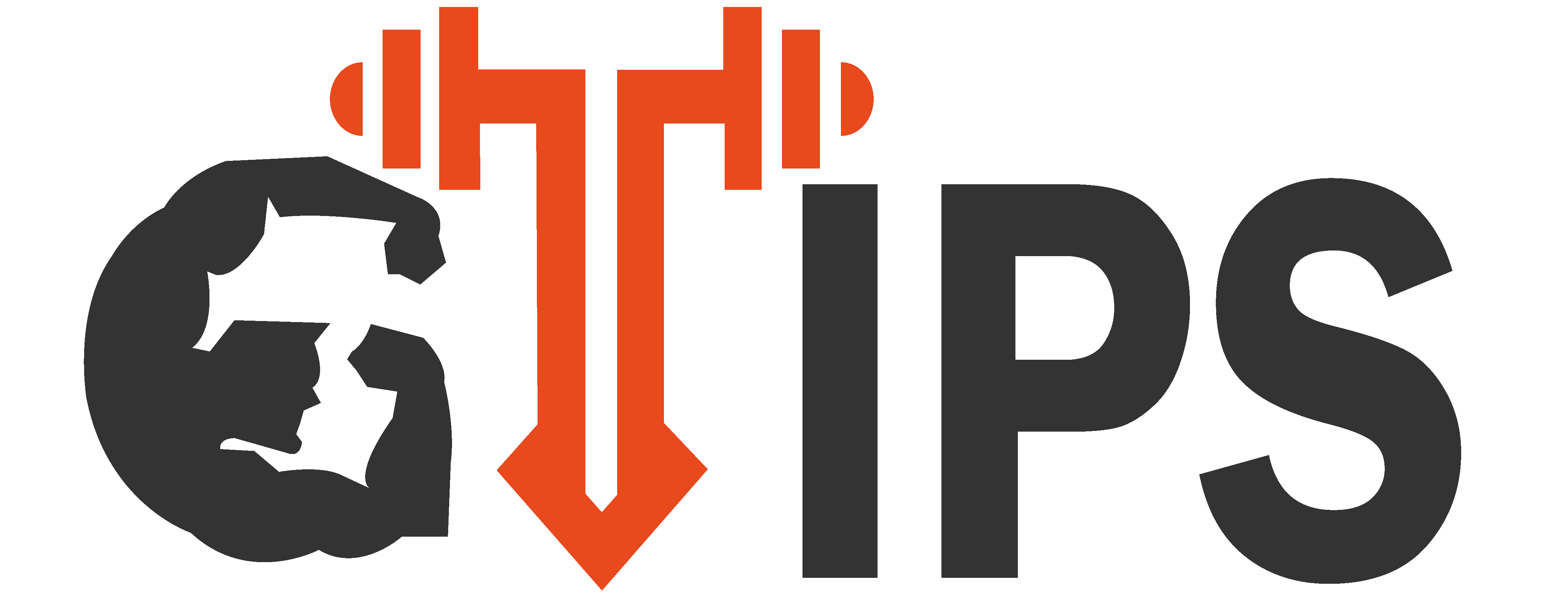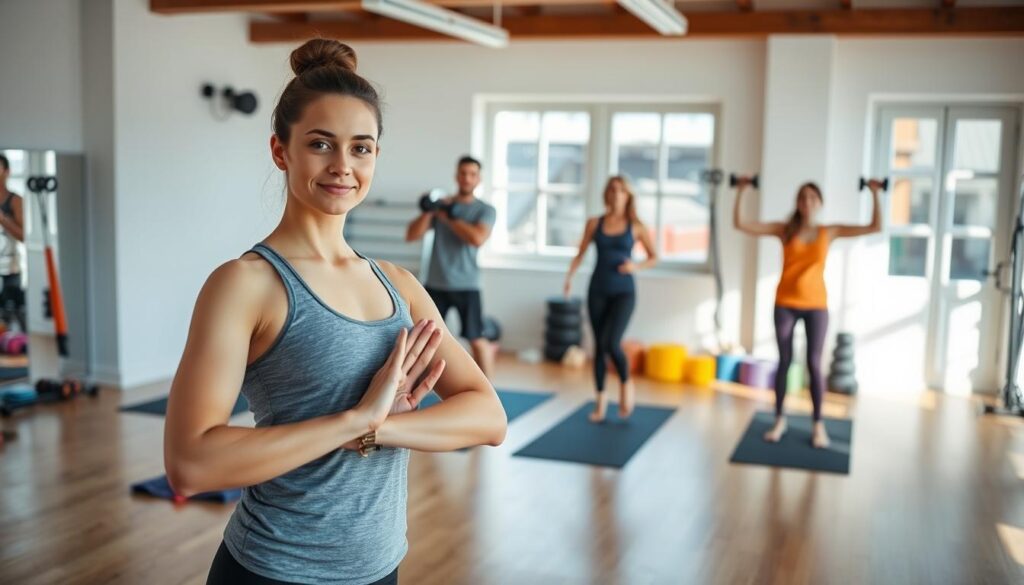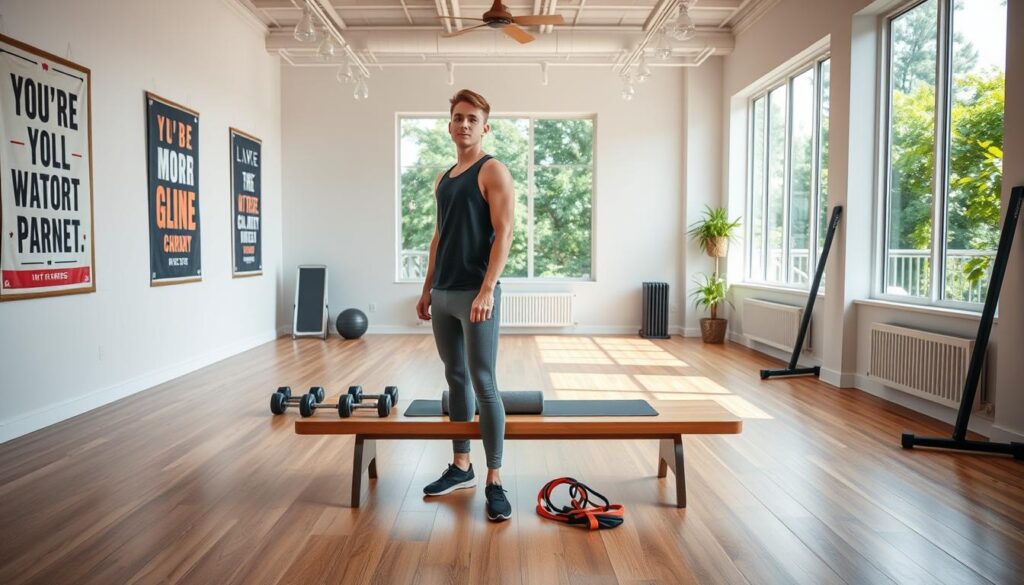Ever wondered why many people find it hard to keep up with their fitness goals? A good workout plan for beginners might be what you need. It helps you avoid the confusion and stress of starting a new routine. With a clear plan, you can focus on your progress.
Studies show that beginners with a structured plan feel more confident at the gym. They also reach their fitness goals more often.
Knowing the benefits of a tailored workout plan can give you the confidence to start your fitness journey. Let’s look at how to make a program that fits your needs.
Key Takeaways
- A structured workout plan helps reduce anxiety and builds confidence.
- Consistency is key to achieving your fitness milestones.
- Understanding your goals can enhance your workout experience.
- A simple fitness program can streamline your journey to better health.
- Having a plan allows you to track your progress effectively.
Understanding the Importance of a Workout Plan
Having a workout plan is key to your fitness journey. It shows you what exercises to do at each session. This makes your gym visits more effective.
With a beginner’s plan, you can train all your muscles. This avoids overtraining or not training enough.
Your plan is like a roadmap to your fitness goals. It helps beginners feel less lost in the gym. It lets you focus on your workouts with confidence.
Tracking your progress is another big plus of a workout plan. Seeing how you’ve improved helps build muscle and endurance. A good plan includes exercises you can measure, showing your progress and motivating you to keep going.
Having a plan makes you more accountable. It helps you stick to your fitness goals. Adding variety to your plan keeps your workouts interesting and leads to better results.
Adding a workout plan to your routine makes it simpler and more rewarding. It lets you take charge of your fitness. This way, you build lasting healthy habits.
What to Consider When Creating a Workout Plan
When you start a beginner gym workout plan, think about what you want to achieve. Do you want to lose weight, build muscle, or get healthier? Knowing your goals helps you pick the right exercises.
A good plan should have strength training, cardio, and flexibility exercises. This mix helps you get stronger, improves your heart health, and boosts flexibility.
Choose exercises that fit your current fitness level and what you like. Doing activities you enjoy makes sticking to your plan easier. For instance, if you like group classes, try cycling or zumba for fun and fitness.
Be ready to change your plan as you get better. Check your goals often and adjust your plan to keep you motivated and moving forward.
Establishing Your Fitness Goals
Setting clear and achievable fitness goals is key for anyone starting their fitness journey. These goals help you stay focused and motivated during workouts. You might aim for strength, endurance, weight loss, or overall wellbeing.
Types of Goals to Consider
- Building Muscle: Focus on muscle-building exercises if you want to gain strength.
- Increasing Endurance: Aim for aerobic activities to boost stamina.
- Losing Weight: A weight loss goal can guide your workouts and diet.
- Improving Flexibility: Setting a goal for flexibility can include stretching and yoga.
These goals help create a personalized workout plan. Remember, everyone’s journey is different. Tailoring your approach is the best way to start.
Setting Realistic Expectations
While ambition is important, knowing your current fitness level is just as key. Set realistic goals that fit your lifestyle and fitness level. Starting too high can burn you out.
Creating a lasting workout schedule takes dedication. Experts say to stick with a plan for at least three months. Mix different activities to meet your goals. For more on setting effective goals, check out this resource.
Workout Plan for Beginners: Key Elements
Creating a good workout plan is all about choosing the right exercises. A simple fitness program for beginners should include basic movements. These exercises work many muscles at once, building a strong base for your fitness journey.
Types of Exercises to Include
When making your easy beginner exercise plan, focus on compound exercises like squats, push-ups, and lunges. These exercises work many muscles at once, boosting strength and endurance. Start with bodyweight exercises, as they can be changed to fit your fitness level.
Balancing Strength and Cardio
A good workout plan should mix strength training and cardio. Try to do at least three days of strength training and add cardio activities you like. Walking, cycling, or swimming are great for your heart and fitness. Check out beginner-friendly cardio workouts to find what works for you.
As you get better, keep changing your workouts to meet your new goals. Being flexible keeps you excited and motivated on your path to better health and fitness.
Crafting Your Beginner Workout Schedule
Creating a beginner workout schedule is key to a consistent routine. Aim for three to four workout days a week. This balance of strength and cardio exercises is vital for fitness.
Don’t forget the importance of rest days. They help your body recover and prevent burnout.
Frequency of Workouts
First, pick specific days for your workouts. Here’s a sample weekly plan:
| Day | Focus | Duration |
|---|---|---|
| Monday | Full-Body Strength | 45-60 minutes |
| Tuesday | Cardio (Brisk Walking or Jogging) | 30 minutes |
| Thursday | Upper Body Strength | 45-60 minutes |
| Saturday | Active Recovery (Yoga or Stretching) | 30 minutes |
Planning Rest Days
Rest days are essential in your schedule. They let your muscles recover and grow. Without rest, you might get tired or hurt.
Listen to your body. Progress often happens during rest. For more tips, check out this resource.
Choosing the Right Exercises for Your Goals
Starting your fitness journey means picking the right exercises. Different methods suit different goals and preferences. Knowing the difference between full body and split training helps you choose wisely.
Full Body vs. Split Training
Full body workouts hit many muscles at once. They’re great for beginners to build a strong base. You’ll do exercises like squats, lunges, and pushups.
Split training, on the other hand, targets specific muscles on different days. It’s better for those who want to focus on certain areas. Choose what fits your lifestyle and keeps you excited about working out.
Incorporating Cardio and Mobility Work
Cardio and mobility are key parts of your routine. Cardio boosts heart health and endurance. Mobility work keeps your joints flexible and improves movement.
Balance strength training with these to get the most from your workouts. A good mix helps you reach your goals and feel better overall.
For tips on picking the right exercises, check out choosing exercises for goals that match your needs.
Sample Beginner Workout Routines
Starting a workout plan is key for beginners. It makes training effective and fun. Here’s a sample plan with strength, cardio, and mobility exercises. It helps you get better with each workout.
Weekly Workout Example
| Day | Workout Type | Exercises | Duration |
|---|---|---|---|
| Monday | Strength Training | Squats, Push-Ups, Dumbbell Rows | 30 minutes |
| Tuesday | Cardio | Brisk Walking or Jogging | 20 minutes |
| Wednesday | Mobility Work | Yoga or Stretching Routine | 30 minutes |
| Thursday | Strength Training | Deadlifts, Overhead Press, Lunges | 30 minutes |
| Friday | Cardio | Cycling or Swimming | 20 minutes |
| Saturday | Active Rest | Leisurely Walk or Light Activity | 30 minutes |
| Sunday | Rest Day | — | — |
Variation of Exercises for Progression
As you get better, change your workouts. This keeps them interesting and challenges your muscles. Here are some tips:
- Slowly add more weight to your strength exercises.
- Try interval training in cardio.
- Add mobility routines like foam rolling or Pilates.
- Try circuit training for a different workout style.
Tracking Your Progress
Keeping an eye on your fitness progress is key to reaching your goals. It helps you understand how well you’re doing and lets you tweak your workout plan. Knowing how to measure success boosts your motivation and keeps you on track.
How to Measure Success
To really see how you’re improving, focus on these important metrics:
- Track workouts: Record sets, reps, and weights to see how you’re getting better over time.
- Monitor body metrics: Watch your weight, body fat percentage, and measurements.
- Assess physical capabilities: Check how you do in exercises like running or lifting.
Seeing small victories can really boost your motivation. Celebrating these wins keeps you focused on your fitness goals and helps you keep going.
Using Apps and Journals for Tracking
Using technology makes tracking easier. Apps like MyFitnessPal and Fitbit let you log your workouts, diet, and progress. They offer lots of features to help you track your fitness.
On the other hand, a fitness journal is a personal way to record your workouts, thoughts, and feelings. It helps you stay accountable and feel proud of your progress.
The Role of Nutrition in Your Fitness Journey
Nutrition is key in your fitness journey. It affects your performance, recovery, and results. Knowing what nutrients you need for your goals can boost your training. The right nutrition helps you get the most out of your workouts and recover faster.
Fueling Your Workouts
It’s important to eat the right foods before working out. Carbs are your main energy source, and proteins help repair muscles. Eat a balanced meal with carbs and proteins 30 to 60 minutes before exercising. Drinking water is also vital to keep your energy up during exercise.
Post-Workout Nutrition Essentials
Post-workout nutrition is very important. Your body needs the right foods to refill energy and repair muscles. Eating carbs and proteins within two hours after working out helps a lot. This supports your fitness journey and helps your muscles grow.
Incorporating Rest and Recovery
Adding enough rest and recovery to your fitness plan is key for the best results. The role of recovery is huge, affecting how well you perform and feel. Good sleep is essential because it’s when your body fixes and grows muscle.
By making sleep a priority, you wake up feeling fresh and ready for your workouts.
To boost your recovery, try different methods. Here are some good ones:
- Active Rest: Do light activities like walking or cycling on rest days. It helps blood flow and keeps muscles loose.
- Stretching: Stretch after working out to get more flexible and lower injury risk.
- Foam Rolling: Use a foam roller on sore spots to relax muscles and cut down on tension.
- Hydration: Drink enough water to help muscles work right and recover.
- Nutrition: Eat a balanced diet with proteins, carbs, and fats to help your body recover.
Using these recovery methods can make soreness go away and help your fitness journey. Taking recovery seriously is the first step to keep getting better and moving forward.
Staying Motivated on Your Fitness Journey
Staying motivated on your fitness journey can be tough. Doing activities you enjoy is key. Fun workouts lead to better motivation and a consistent routine.
Finding activities you like makes your fitness journey better. It helps you stay motivated and reach your goals.
Finding Enjoyable Activities
Finding fun activities is vital for a lasting fitness plan. Try different exercises like:
- Group classes like Zumba, yoga, or cycling
- Outdoor sports like jogging, hiking, or playing basketball
- Dance workouts that enhance coordination and rhythm
- Activities that incorporate music, making it fun
These activities boost your mood and energy. Sticking to them keeps you motivated on your fitness path.
The Power of Accountability
A support system greatly impacts your fitness journey. Accountability turns solo efforts into shared goals. Consider:
- Partnering with a workout buddy for mutual encouragement
- Joining local fitness groups or classes for communal motivation
- Using fitness apps that track your progress and set reminders
- Hiring a personal trainer to guide you through your routine
Sharing your goals with others adds a sense of responsibility. This social support makes workouts more enjoyable and keeps you motivated.
Potential Challenges and How to Overcome Them
Starting a fitness journey can be tough. It’s important to know the obstacles you might face. By avoiding common mistakes, you can lay a solid foundation for your fitness journey.
Common Beginner Mistakes
Newcomers often make mistakes that can slow them down. Some common errors include:
- Skipping warm-ups and cool-downs, which can lead to injuries.
- Focusing too much on quantity instead of quality of exercises.
- Neglecting to set realistic goals, resulting in frustration and burnout.
- Failing to track progress, making it difficult to recognize improvements.
Knowing these mistakes helps you avoid them. This way, you can make a better workout plan.
How to Prevent Gymtimidation
Many beginners feel scared in the gym. To overcome this, you need a few strategies:
- Familiarize yourself with gym equipment through tutorials or guided tours.
- Consider joining group classes for a supportive environment.
- Bring a friend along to share the experience and boost your confidence.
- Educate yourself on proper techniques through online resources or expert advice.
Dealing with gymtimidation is key to staying motivated. Remember, success in fitness takes time and effort.
Getting Support: Personal Trainers and Classes
Getting help from personal trainers and group fitness classes can really boost your fitness journey. Personal trainers create workout plans just for you, based on your goals and fitness level. They make sure you do exercises right, which helps avoid injuries.
They also give you the push you need to keep going. This helps you stay on track with your fitness goals.
Benefits of Working with a Professional
Having a personal trainer means you get advice that fits you perfectly. This personalized help helps you understand your body better. Working with a trainer can lead to:
- Improved knowledge of exercises and techniques
- Increased motivation through tailored encouragement
- Flexible scheduling based on your availability
Choosing Classes That Suit Your Needs
Finding the right fitness classes is key to your fitness journey. Classes offer structured workouts and a chance to meet others with similar goals. Picking classes that interest you can make you more motivated and committed. Look for:
- Yoga or Pilates for flexibility and core strength
- Zumba or dance classes for a fun cardio experience
- Boot camps for intensive, full-body workouts
Conclusion
Starting your fitness journey is a big step. It’s important to set clear goals and understand the mix of strength and cardio exercises. Also, sticking to a regular workout schedule is key to success.
Tracking your progress and paying attention to what you eat are also essential. Don’t forget the importance of rest and recovery. These help you stay healthy and perform better.
Creating a workout plan that fits your goals and lifestyle is a great challenge. By doing this, you can start your fitness journey with confidence. This way, you’ll not only reach your goals but also keep working on your health for the long term.






